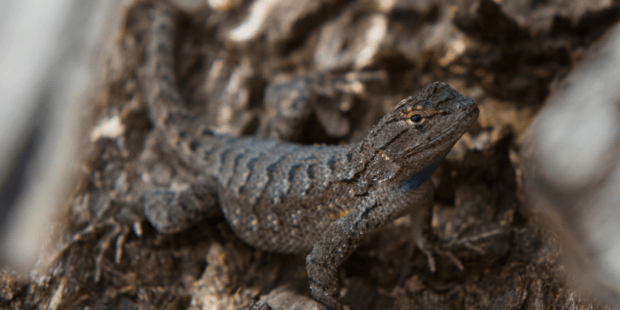We have much more to do and your continued support is needed now more than ever.
Tick-Tock: Climate Action Needed to Stop Tick Boom

Americans have a passion for the outdoors, but ask any hunter, angler, birder, or gardener and they will tell you that the environment is changing. Unfortunately, across the United States and around the world, climate change poses an increasingly dire threat to wildlife, communities, and public health. Changes to our climate are destroying critical wildlife habitat, causing species’ ranges to shift, decreasing available food and water for wildlife, changing the chemistry of the ocean, and increasing the rate of species’ extinction. One of the major concerns is increasingly warm winters, which serve as a welcome mat for pests like ticks, allowing them to survive in greater numbers and expand their range.
Ticks are arachnids, like spiders, and are pests that outdoor enthusiasts rightfully try to avoid. Climate change is influencing ticks, the survival of their hosts (such as deer and moose), and the bacterium that cause the diseases they carry, such as Lyme disease. Although scientists are currently studying the complex ways in which temperature, humidity, and precipitation influence the spread of tick-borne illnesses, some trends have been discovered:
- The geographic areas in which ticks can survive and thrive are expanding as a result of climate change.
- Milder winters, which are expected to become more frequent as a result of climate change, can also result in more ticks surviving the cold season. This can lead to population booms, which in turn can increase the risk the spread of tick borne illness.

Only a few species of tick actually bite and transmit disease to people. Of these, different species transmit different diseases. According to the Center for Disease Control, tick borne diseases have more than doubled in 13 years (between 2004 and 2016). Ticks were also responsible for 77 percent of all vector borne disease reports (fleas, mosquitos, ticks, etc.). The most prevalent disease carried by ticks was Lyme disease, which accounts for 82 percent of all tick borne cases. However, spotted fever and other diseases are also on the rise.
Blacklegged ticks move into the city and bring Lyme disease
Many people assume that city living protects them from outdoor pests like ticks, but in a changing world this is no longer the case. In New England and the Northeast, white-footed mice serve as the primary host of blacklegged ticks. The rodents occupy more urban and suburban landscapes as their habitat shrinks from development and their populations grow as a result of climate change. City parks offer a safe home for these rodents, as the parks are often absent of predators like foxes.

As cities infringe more on their habitat, and their range expands, the mice carry ticks into urban and suburban habitats. And Lyme disease. Lyme disease, caused by the bacterium Borrelia burgdorferi, can be a serious illness if not identified quickly and treated with anti-biotics. Infected individuals will see a rash around the bite area that looks like a bullseye. If treated quickly, Lyme disease can be often be avoided. But for a small subset of the population antibiotics do not work, and if the bite is not detected, Lyme disease can turn into a debilitating illness that can cause joint stiffness, brain inflammation, and nerve pain. Usually, ticks must be attached for 36-48 hours before they can transmit the disease, so early detection and removal is critical for preventing infection.
Wildlife to the rescue

Some wildlife are actually unsung heroes when it comes to preventing the spread of tick-borne diseases. The opossum, the only marsupial in the United States, is one example of this.
Possums a truly remarkable tick killing machines – one possum can kill as many as 4,000 ticks in a week!
Because possums are so good at grooming and killing ticks, they help keep tick populations under control and reduce the risk of people being bit.
Further, some species, such as the Western fence lizard, have the ability to neutralize Lyme disease when infected ticks bite them. Lyme disease is now the most common vector borne disease in the United States, making it a big problem for outdoor lovers. The Center for Disease Control estimates that about 300,000 Americans get Lyme disease each year, but only about 35,000 diagnoses are reported.

How to prevent tick bites
- Stay on the trail! Avoiding woody and brushy areas, and areas with high grass and leaf litter, will reduce your risk of being bitten.
- Cover exposed skin with long-sleeved shirts and long pants.
- Use repellent that contains 20 percent or more DEET, picaridin, or IR3535 on exposed skin for protection that lasts several hours
- Treat your clothing with 0.5% permethrin, this protection will repel ticks and will continue to offer protection after several washings. Many brands of outdoor gear will treat their clothing.
- Bathe, shower, or check for ticks when you are done with your outdoor adventures.
- You can also tumble dry clothes in a dryer on high heat for 10 minutes to kill ticks on dry clothing after you come indoors.
- For more information, check out our factsheet and the Center for Disease Control’s tips, too!
Defend our Outdoor Heritage from Climate Change
Americans have a responsibility to defend their outdoor heritage from the threat of climate change. There are ways to protect ourselves from the pests that climate change is helping to proliferate. Ticks should not stop you from enjoying activities like camping, hiking, and playing outdoors – but make sure to take steps to prevent tick bites. Also, we must take action as a nation to combat the root of the problem – carbon pollution. It is critical for Congress to take action and enact federal climate policy.

One of the most cost-effective, far reaching, and quickest avenues for reducing climate pollution is a federal price on carbon. A federal price on carbon could take the form of either a cap-and-trade program or a carbon tax program, or some combination of the two. By making polluters pay for what they emit, they receive a strong market signal to cut pollution. Such policies could dramatically reduce carbon emissions while generating funding for national priorities, such as protecting vulnerable people and wildlife from unavoidable climate impacts or developing wildlife-friendly renewable energy.





















